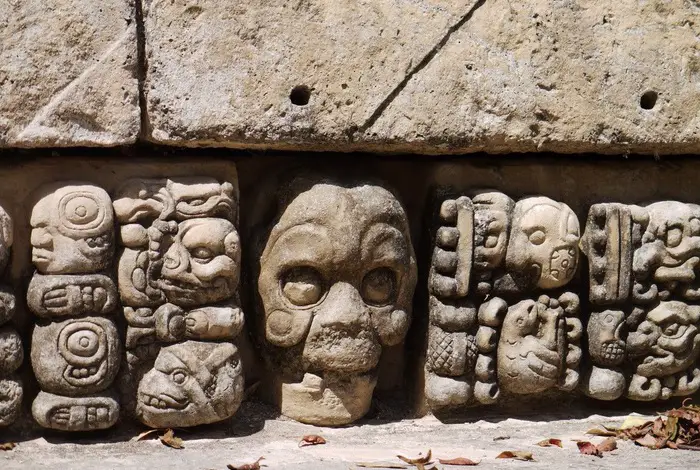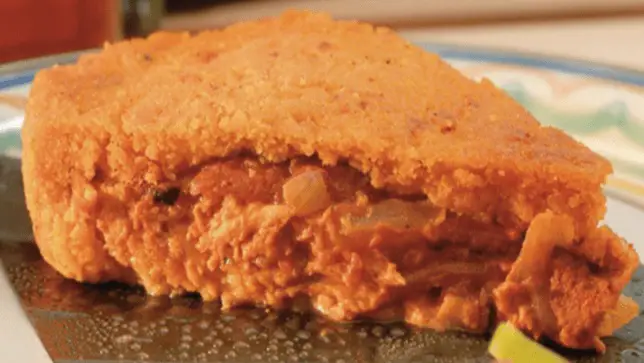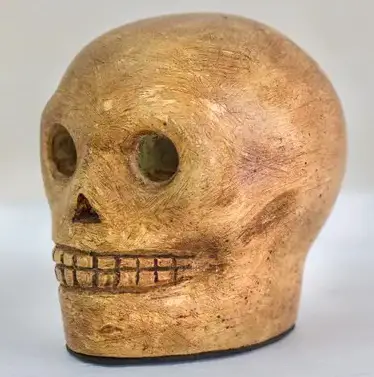Podcast: Play in new window | Download
Subscribe: Apple Podcasts | RSS
 The Date was November 1, 1841. Thirty-five-year-old New-Jersey-born John Lloyd Stephens had recently arrived in Mérida, the capital city of Yucatán. Two years earlier, American President Martin van Buren appointed Stephens to be the Special US Ambassador to the Federal Republic of Central America. When the shaky government of that new republic fell apart and the country plunged into civil war, Stephens found himself in Central America without a job and lots of time on his hands to explore the mysterious ancient ruins in the jungle. After exploring a dozen or so “lost cities” Stephens returned to the States, only to long for more adventures among the crumbling stone cities in the untouched forests. In October of 1841 he would return to the region, this time exploring Mexican territory, using Mérida as his jumping-off point. While organizing the expedition to go deeper in the interior, Stephens spent time in the Yucatán capital taking in the local culture. In his notes that would later become a book called Incidents of Travel in Yucatan, Stephens describes what he calls the Fête of Todos Santos, which is known in English as All Saints’ Day. Today throughout Mexico this celebration – spanning 3 days – is known as Día de Muertos, or Day of the Dead. In 1841, Stephens may have been the very first person to make any written record in English of this holiday as celebrated in the Maya part of Mexico. In the Maya region of eastern Mexico, the people call the holiday Hanal Pixán. In his book, Stephens writes:
The Date was November 1, 1841. Thirty-five-year-old New-Jersey-born John Lloyd Stephens had recently arrived in Mérida, the capital city of Yucatán. Two years earlier, American President Martin van Buren appointed Stephens to be the Special US Ambassador to the Federal Republic of Central America. When the shaky government of that new republic fell apart and the country plunged into civil war, Stephens found himself in Central America without a job and lots of time on his hands to explore the mysterious ancient ruins in the jungle. After exploring a dozen or so “lost cities” Stephens returned to the States, only to long for more adventures among the crumbling stone cities in the untouched forests. In October of 1841 he would return to the region, this time exploring Mexican territory, using Mérida as his jumping-off point. While organizing the expedition to go deeper in the interior, Stephens spent time in the Yucatán capital taking in the local culture. In his notes that would later become a book called Incidents of Travel in Yucatan, Stephens describes what he calls the Fête of Todos Santos, which is known in English as All Saints’ Day. Today throughout Mexico this celebration – spanning 3 days – is known as Día de Muertos, or Day of the Dead. In 1841, Stephens may have been the very first person to make any written record in English of this holiday as celebrated in the Maya part of Mexico. In the Maya region of eastern Mexico, the people call the holiday Hanal Pixán. In his book, Stephens writes:
“On this day every Indian according to his means purchases and burns a certain number of consecrated candles in honor of his deceased relatives that in memory of each member of his family who has died within the year. Besides this they bake in the earth a pie consisting of a paste of Indian corn stuffed with pork and fowls and seasoned with chili and during the day every good Yucateco eats nothing but this. In the interior where the Indians are less civilized they religiously place a portion of this composition out of doors under a tree or in some retired place for their deceased friends to eat and they say that the portion thus set apart is always eaten, which induces the belief that the dead may be enticed back by appealing to the same appetites which govern when living but this is sometimes accounted for by malicious and skeptical persons, who say that in every neighborhood there are other Indians poorer than those who can afford to regale their deceased relatives and these consider it no sin in a matter of this kind to step between the living and the dead.”
 John Lloyd Stephens described a special pie baked in the earth which is a unique Maya take on Day of the Dead or Hanal Pixán. The pie – called mukbipollo – is still being made in the Yucatán for this special holiday and it dates back untold centuries. The word mukbipollo is a combination of a Mayan dialect and Spanish. The Mayan word “muk” means “to bury,” and the word “bil” means “twist or stir.” “Pollo,” as any first-year Spanish student knows, means “chicken,” in Spanish. So, essentially, the combination of the words means “blended and buried chicken dish.” People in the Yucatán today also call this baked pie “pib,” for short. The mukbipollo is much like a tamale with corn dough encasing a filling. The filling includes a mixture of chicken and pork, combined with a small black bean called a xpelon and garlic and onions, along with various herbs and spices such as achiote, black pepper, oregano, salt and epazote. The prepared mukbipollo are wrapped in banana leaves and slowly baked in a shallow underground hearth for a few hours. When ready, they are removed from the hearth, unwrapped, and cut into four pieces. One of the pieces is shared on the ceremonial altar in the home put up in honor of the deceased relatives. In the Maya area, as it is throughout Mexico, the altar is called an ofrenda.
John Lloyd Stephens described a special pie baked in the earth which is a unique Maya take on Day of the Dead or Hanal Pixán. The pie – called mukbipollo – is still being made in the Yucatán for this special holiday and it dates back untold centuries. The word mukbipollo is a combination of a Mayan dialect and Spanish. The Mayan word “muk” means “to bury,” and the word “bil” means “twist or stir.” “Pollo,” as any first-year Spanish student knows, means “chicken,” in Spanish. So, essentially, the combination of the words means “blended and buried chicken dish.” People in the Yucatán today also call this baked pie “pib,” for short. The mukbipollo is much like a tamale with corn dough encasing a filling. The filling includes a mixture of chicken and pork, combined with a small black bean called a xpelon and garlic and onions, along with various herbs and spices such as achiote, black pepper, oregano, salt and epazote. The prepared mukbipollo are wrapped in banana leaves and slowly baked in a shallow underground hearth for a few hours. When ready, they are removed from the hearth, unwrapped, and cut into four pieces. One of the pieces is shared on the ceremonial altar in the home put up in honor of the deceased relatives. In the Maya area, as it is throughout Mexico, the altar is called an ofrenda.
The Day of the Dead holiday is found throughout Mexico and wherever large populations of Mexicans or their descendants reside, such as the Southwestern US. For a general overview of the holiday, please see Mexico Unexplained episode number 5: https://mexicounexplained.com/day-of-the-dead-an-overview/ Here, we will go over some Day of the Dead basics and then explore the Maya flavor of the holiday known as Hanal Pixán. Day of the Dead known as Día de Muertos in Mexico and Día de los Muertos in the United States has indigenous roots dating back possibly thousands of years. Basically, it is a time of year – a few brief days around November First – when departed souls are welcomed back to earth and honored with a mix of solemn reverence and festive celebration. All cultures in ancient Mexico had rituals regarding death, and when the Spanish arrived in the New World, they knew they needed to somehow fold these beliefs and ceremonies surrounding death into the new religion they were introducing to the Natives. The blend of Catholic beliefs with some of the native customs was a sort of compromise to move forward. The death holidays of the Aztecs took place in the springtime, and those of the Maya at the time of contact took place in the  summer. The ancient Maya – the high civilization known for its monumental architecture and refined writing system – was gone for hundreds of years before European contact, and it is unsure what they did to celebrate the dead, or to what extent. From the written records left behind we can see the various deities and rituals surrounding the deaths of important people and there are some indications as to how religion was practiced, but to date there is no concrete written evidence on any specific death festival of the ancient Maya. Archaeologists assume there must have been such a thing, as the various living and breathing civilizations of Mexico had them at the time of European contact. What passes for Day of the Dead in the Maya area today has some ancient local elements mixed in with customs and traditions originating from central Mexico and the remnants of the Aztec Empire, only because these customs and traditions have become part of the mainstream Mexican Day of the Dead celebrations for the national culture of Mexico and are found throughout the country. As cultures now move easily across borders, returning Mexican migrants and the phenomenon of globalization have brought elements of the American Halloween into the traditional Mayan Hanal Pixán celebrations. Some aspects of Halloween found in the Mayan Day of the Dead festivities may appear in the form of images of jack-o-lanterns, scary ghosts, witches riding broomsticks, black cats and the like.
summer. The ancient Maya – the high civilization known for its monumental architecture and refined writing system – was gone for hundreds of years before European contact, and it is unsure what they did to celebrate the dead, or to what extent. From the written records left behind we can see the various deities and rituals surrounding the deaths of important people and there are some indications as to how religion was practiced, but to date there is no concrete written evidence on any specific death festival of the ancient Maya. Archaeologists assume there must have been such a thing, as the various living and breathing civilizations of Mexico had them at the time of European contact. What passes for Day of the Dead in the Maya area today has some ancient local elements mixed in with customs and traditions originating from central Mexico and the remnants of the Aztec Empire, only because these customs and traditions have become part of the mainstream Mexican Day of the Dead celebrations for the national culture of Mexico and are found throughout the country. As cultures now move easily across borders, returning Mexican migrants and the phenomenon of globalization have brought elements of the American Halloween into the traditional Mayan Hanal Pixán celebrations. Some aspects of Halloween found in the Mayan Day of the Dead festivities may appear in the form of images of jack-o-lanterns, scary ghosts, witches riding broomsticks, black cats and the like.
Like the mainstream Day of the Dead found in the areas of Mexico that celebrate the holiday, in the Maya areas October 31 is reserved to welcome back departed children. The Maya call this day U Hanal Palal. November 1st, which is known on the Catholic calendar as All Saints’ Day, is called U Hanal Nucuch Uincoob. All departed loved ones are honored on this day, mostly in private homes, with some public celebratory activity. The next day, November 2nd, called U Hanal Pixanoob or Misa Pixán, corresponds to All Souls’ Day on the Catholic calendar. This is the day of  religious processions and a mass, and a visit to the cemetery. Many public ceremonies in more remote areas occur in cenotes. Cenotes are freshwater sinkholes found throughout the Yucatán and may include huge, cavernous spaces. The ancient Maya saw cenotes as life-giving and sacred, so it is fitting that many villages use their local cenotes for Day of the Dead celebrations. Far away from the more commercialized events geared to tourists on the Riviera Maya in places such as Cancún and Playa del Carmen, the candlelit cenote ceremonies are more private and intimate and are usually restricted to the local villagers. Spanish yields to indigenous languages here, and the cenotes are host native song and dance, as well as community altars lovingly built to remember deceased villagers. More culturally aware tour companies and private guides are now offering cenote-centered Day of the Dead tours with permission of the locals, of course. For more information about sacred cenotes, please see Mexico Unexplained episode number 251 https://mexicounexplained.com/cenotes-of-the-maya/
religious processions and a mass, and a visit to the cemetery. Many public ceremonies in more remote areas occur in cenotes. Cenotes are freshwater sinkholes found throughout the Yucatán and may include huge, cavernous spaces. The ancient Maya saw cenotes as life-giving and sacred, so it is fitting that many villages use their local cenotes for Day of the Dead celebrations. Far away from the more commercialized events geared to tourists on the Riviera Maya in places such as Cancún and Playa del Carmen, the candlelit cenote ceremonies are more private and intimate and are usually restricted to the local villagers. Spanish yields to indigenous languages here, and the cenotes are host native song and dance, as well as community altars lovingly built to remember deceased villagers. More culturally aware tour companies and private guides are now offering cenote-centered Day of the Dead tours with permission of the locals, of course. For more information about sacred cenotes, please see Mexico Unexplained episode number 251 https://mexicounexplained.com/cenotes-of-the-maya/
In addition to building altars and cleaning homes and graves to welcome back the dead, in the more rural Maya areas in the Mexican states of Yucatán and Campeche a tradition continues that may very well go back to the ancient Maya, the rite of “the cleaning of the bones.” After a loved one has been buried for 3 or more years, their bones are dug up and gently cleaned with a cloth or brush. Then, the bones are placed in a special box lined with beautiful embroidered or painted linens and left in the cemetery for display. Friends and relatives visit the bones during Hanal Pixán, bringing candles and flowers, and anything that the deceased may have liked while living, such as a favorite food, alcohol, or cigarettes. After Hanal Pixán, the bones are returned to their respective graves. Another Day of the Dead ritual unique to Hanal Pixán, involves the use of salt and water. On the home altars – the ofrendas – and sometimes in the cemeteries, the living will put out two small containers, one full of salt and one of water. The water symbolizes the beginning of life, and the salt represents the end. Anthropologists believe that this tradition has its roots in the ancient Maya civilization. Unlike other parts of Mexico, the Day of the Dead celebrations in the Maya areas may last beyond 3 days or even a week. In the more rural areas Hanal Pixán might go on for the entire month of November. Wherever it is celebrated, Hanal Pixán usually ends in a closing ceremony involving an overabundance of candles to help guide the visiting spirits back to their proper realm.
Based on much older foundations, Hanal Pixán is the special Maya way of celebrating Day of the Dead. How ancient some of the customs are is anyone’s guess. With modern influences of a more structured and uniform national idea of the Mexican Day of the Dead holiday, along with subtle influences from the American Halloween, it is unknown how long the unique aspects of Hanal Pixán will survive through the 21st Century.
REFERENCES
Stephens, John Lloyd. Incidents of Travel in Yucatan. Satstrugi Press, 2019. We are Amazon affiliates. Buy the book on Amazon here: https://amzn.to/3CyZ8cE
